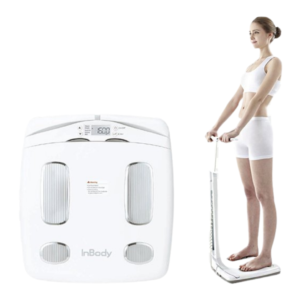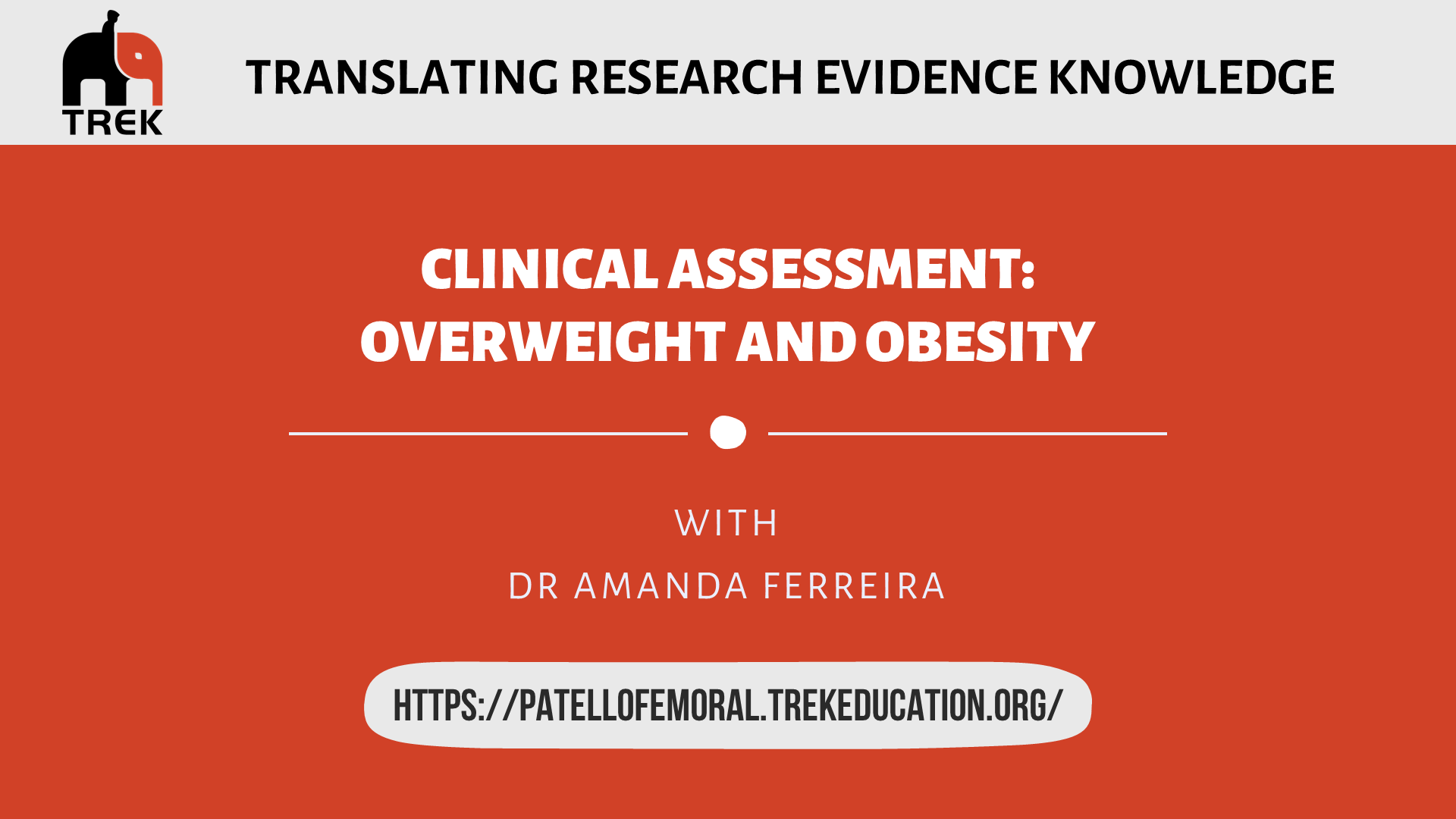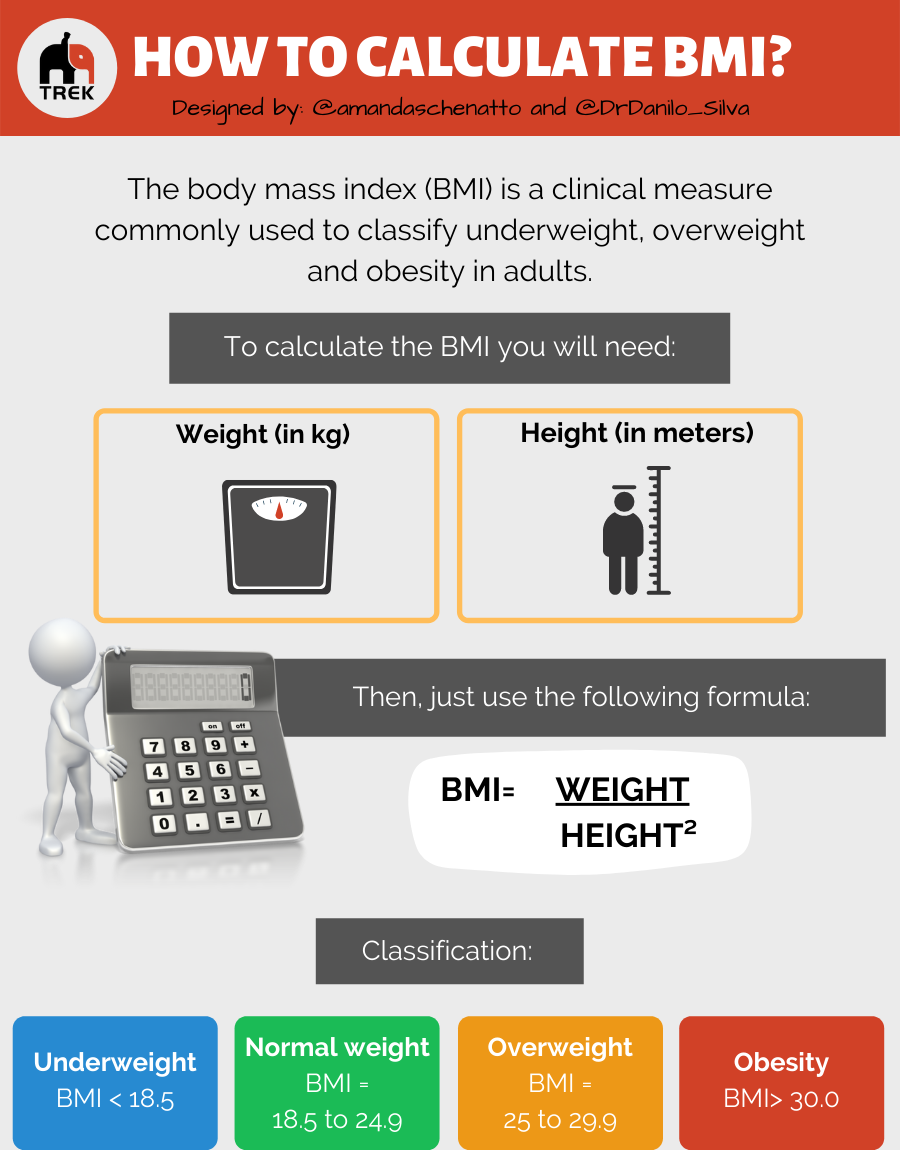Recent evidence demonstrates that most people with patellofemoral pain are overweight or obese.1,2,3 These factors are related to negative impacts on function and lower limb muscle strength.3 Therefore, addressing these factors during the clinical assessment of people with patellofemoral pain can provide important information about the need to include weight management in the treatment plan.4
In this section, you will find tools that can be used to assess whether a patient with patellofemoral is overweight or obese.
Clinically, obesity and overweight can be estimated through a person’s BMI, calculated using weight and height. BMI is a widely used method in both clinical and research environments, due to the ease and low costs of obtaining measurements, as they do not require the use of sophisticated tools and equipment.
According to the World Health Organization,5 BMI can be classified as follows:
- Underweight: BMI < 18.5 kg/m²
- Normal weight: BMI between 18.5 to 24.9 kg/m²
- Overweight or pre-obesity: BMI between 25.0 to 29.9 kg/m²
- Obesity – grade I: BMI between 30.0 to 34.9 kg/m²
- Obesity – grade II: BMI between 35.0 to 39.9 kg/m²
- Obesity – grade III: BMI > 40.0 kg/m²
Recent studies have demonstrated the importance of considering the percentage of body fat and skeletal muscle mass, beyond BMI, in people with patellofemoral pain.2,3 In young adults with patellofemoral pain, a higher percentage of body fat and a lower percentage of skeletal muscle mass are associated with poor function and reduced knee extensor, knee flexor, and hip abductor strength.3 Therefore, whenever possible, it is important to include these measures in the assessment of patients with patellofemoral pain.
 A practical and clinically accessible option to indirectly measure the percentage of fat and skeletal muscle mass is through bioimpedance analysis. Bioimpedance analysis uses the electrical properties of the body to estimate the total body water and from that the body fat mass, and percentage of body fat, and skeletal muscle mass.6
A practical and clinically accessible option to indirectly measure the percentage of fat and skeletal muscle mass is through bioimpedance analysis. Bioimpedance analysis uses the electrical properties of the body to estimate the total body water and from that the body fat mass, and percentage of body fat, and skeletal muscle mass.6
Factors such as nutritional status, recent physical activity, ovulation, and electrode placement can interfere with the measurement and must be controlled.6
Important note: Patients with patellofemoral pain who are overweight or obese, or who present high levels of body fat and low levels of skeletal muscle mass should be educated about the impact that these factors may have on their condition and referred to a multidisciplinary care, which may include, for example, a dietitian.
Watch the video below with Dr. Amanda Ferreira, answering the most common questions about this topic [COMING SOON]:


Now that you have reviewed everything about the clinical assessment of overweight and obesity in patellofemoral pain, test your knowledge by taking the quiz below.
References
- Hart et al. 2017. Is body mass index associated with patellofemoral pain and patellofemoral osteoarthritis? A systematic review and meta-regression and analysis.
- Ferreira et al. 2021. Exploring overweight and obesity beyond body mass index: A body composition analysis in people with and without patellofemoral pain.
- Ferreira et al. 2020. Overweight and obesity in young adults with patellofemoral pain: Impact on functional capacity and strength.
- Barton et al. 2018. Should we consider changing traditional physiotherapy treatment of patellofemoral pain based on recent insights from the literature?

